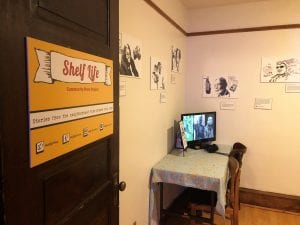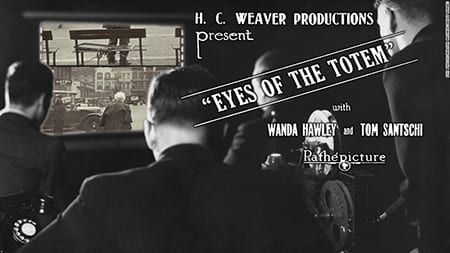Vanishing Seattle’s New Documentary Film Series
“The ‘vanishing’ part of ‘Vanishing Seattle’ is just one part of the story,” said Cynthia Brothers. “There are also many stories of resistance, resilience, and creation.”
Cynthia Brothers is the founder of Vanishing Seattle, a social media account that is “documenting disappearing/displaced businesses, homes, communities, and cultures of Seattle.”
Clad in one of her signature miniskirt and Vanishing Seattle t-shirt ensembles, Cynthia is stood in the living room of a packed house as she introduced the new Vanishing Seattle documentary film series. The series premiere was at and about Wa Na Wari, a project housed in a 5th-generation Black-owned craftsman in the historically Black Central District neighborhood. According to a sign in the entryway of this legacy home, Wa Na Wari (which means “our home” in the Kalabari language) “creates space for Black ownership, possibility, and belonging through art, historic preservation, and connection.”
Cynthia has teamed up with Martin Tran, a filmmaker and former co-director of the Seattle Asian American Film Festival, for this seven-part film series. The films will expand upon a lot of the same themes and questions that Vanishing Seattle raises with its Instagram chronicles. Cynthia explained, “Vanishing Seattle and this film series involve conversations dealing with change. But not a dichotomy of old: good, new: bad. Instead it asks, ‘What does change mean? What does progress really look like, and what are the ways that change can serve and benefit communities? What’s possible with creative, forward-thinking ideas? What do different solutions to displacement and gentrification look like?’ In the case of places that are vanishing we ask, ‘Why is this happening? What caused this to vanish, and what can be done to prevent this from happening?’”
“The advantage of this project is that film is a lot more dynamic as a medium,” said Cynthia. “Most of the Instagram posts have been of buildings and physical places, and it’s hard to get to the people behind those places with just pictures and captions. The films humanize these places and allow people to share stories in their own words.” While all the films in the series are co-produced by Cynthia and Martin, they engage different filmmakers to tell various stories about different communities. “One of the principles of this film series is that the filmmakers have a personal connection to the community and the place that they want to make a film about,” Cynthia pointed out.
“Some of the things we struggle with in using film pertain to timing,” described Cynthia. “Everything is happening so fast, in some cases, places are gone before we can find a filmmaker to tell its story. It is also hard to be selective. There are countless stories to tell, so many places to talk about. Often, there are multiple stories attached to a single place and the shorter the film is (the films are just 7-10 minutes long), the harder the choices are that you must make. We’re always asking ourselves, ‘Are we doing this justice?’”
“The goal of the series is to raise general awareness of these places and communities, through their stories,” explained Cynthia. “It’s about capturing and sharing places that are built into the structure that make Seattle unique. We all lose out when we lose these places. They should be important to us as a city. With many of these films, there is an active opportunity to support small businesses and places that provide space for art and culture to thrive.”
In the living room of Wa Na Wari, Inye Wakoma, one of the founders of the project and the grandson of the owner of the home where Wa Na Wari is based, warmly emceed the evening’s program. People sat cross-legged on the floor or in chairs, stood in the dining room and hallways, and trailed up the stairs. Food and drinks were generously offered, and the upstairs rooms were activated with exhibits by Black artists. A Shelf-Life Community Stories neighborhood cultural mapping project was on display, and a vintage rotary phone that you can pick up and hear oral histories through sat on a little table beside a wooden chair in the hallway.

The Shelf Life Community Story Project space in Wa Na Wari
Performances by storyteller-rappers and poets (namely Yirim Seck and Ebo Barton) preceded the screening of the film, which was directed by devon de Leña and CHIMAERA. The film rolled and Wakoma was then on screen talking about the gentrification and displacement currently happening in the Central District: “The biggest thing that folks are trying to pinpoint is ‘How do we actually survive this? And then, how do we come out on the other side of this, in some way that actually feels whole?’ We need imaginative responses, ways of imagining ourselves in the future that have everything to do with us getting there on our own, in ways that make sense to us.”
Watch the film Central District: Wa Na Wari here, and be sure to follow @vanishingseattle on Instagram to stay informed about future screenings and other opportunities to get active! You can also read more about Wa Na Wari and the Vanishing Seattle film series in these Crosscut articles.








